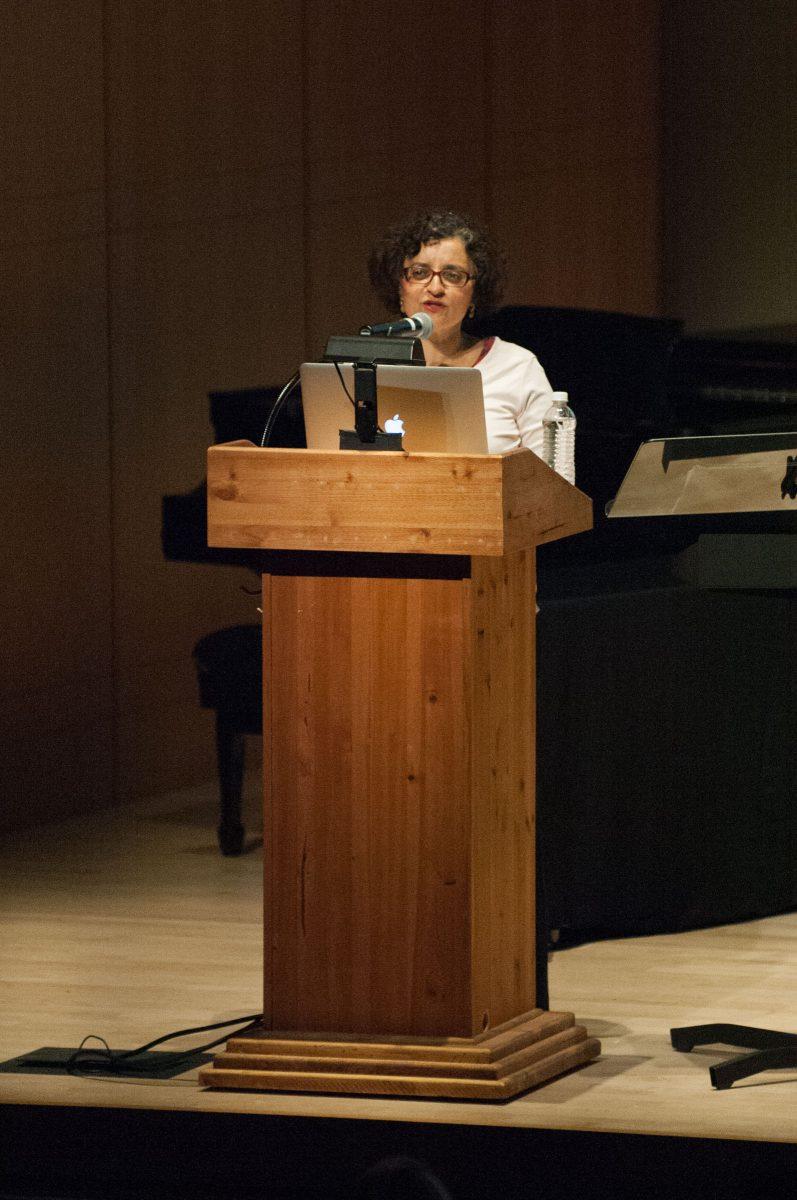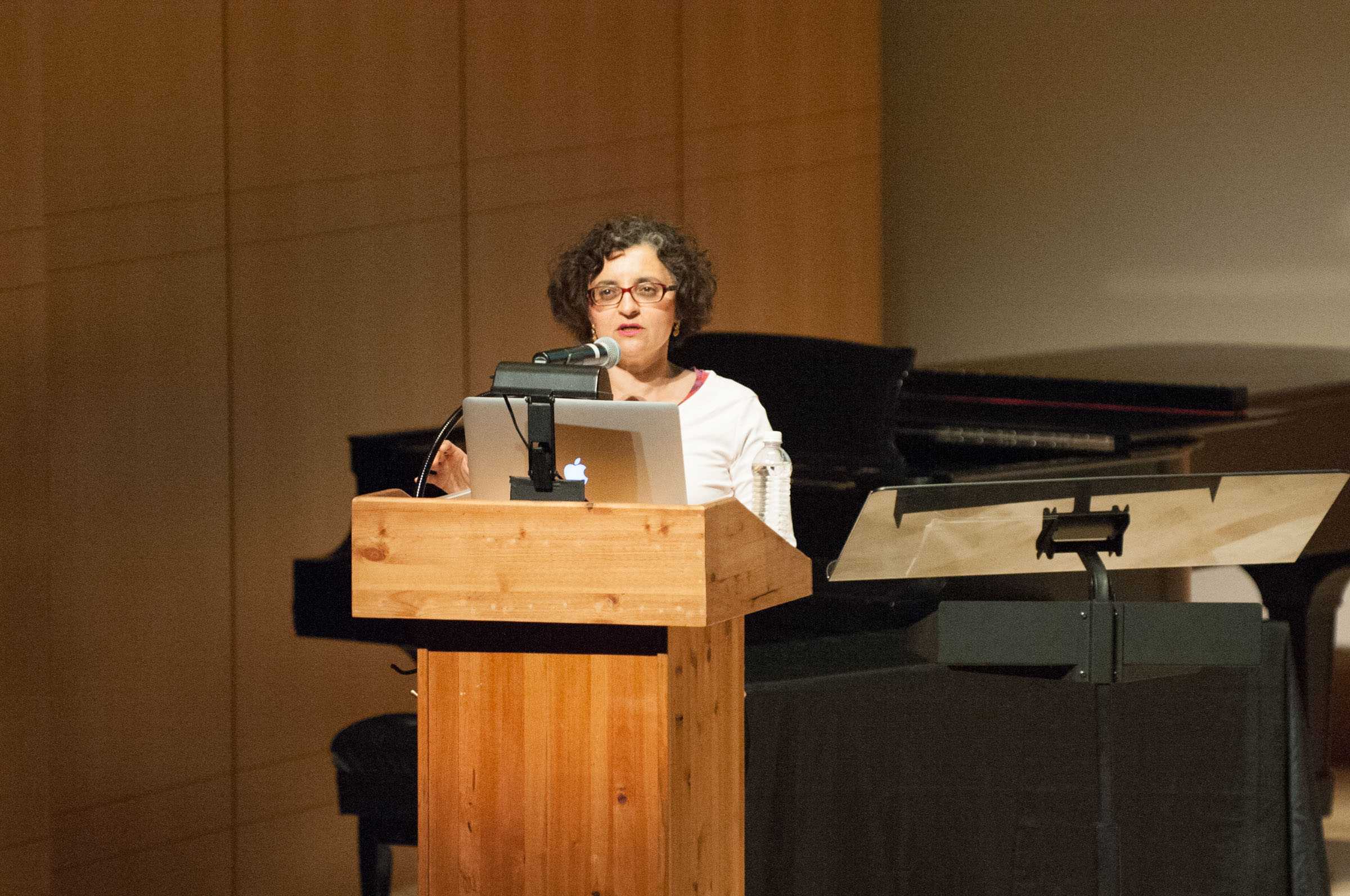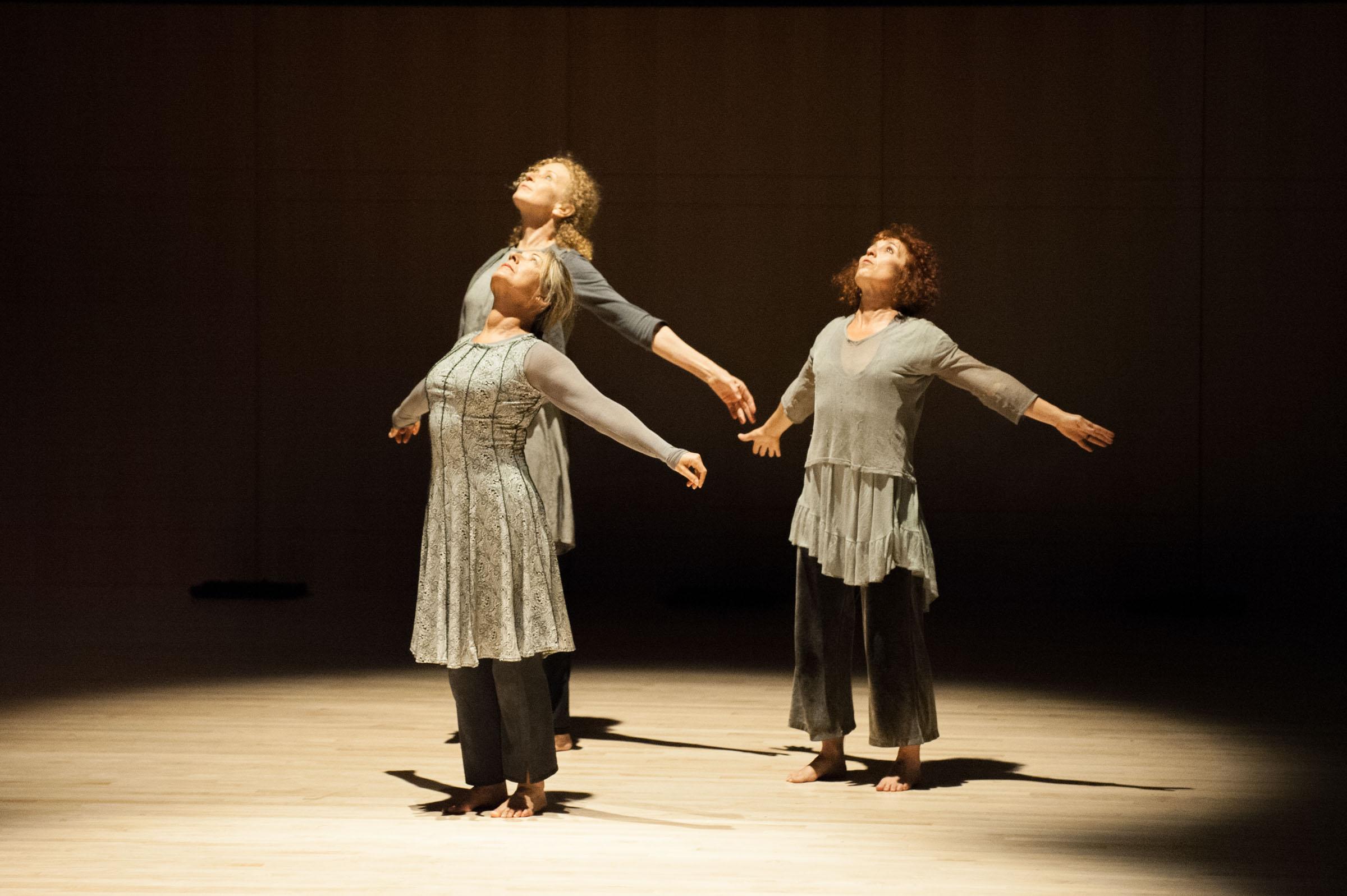There’s a saying that one cannot understand the life of another until walking a mile in their shoes. Or as with the case of Sahar Amer’s lecture, “What is Veiling,” at Schroeder Hall on April 14, simply substitute “shoes” for “veil.”
The professor and specialist of comparative, cross-cultural relations between Arab and Muslim societies and Western culture, conveyed the forming of a holistic understanding of the Islamic culture practiced by Muslims, particularly Muslims living within U.S. borders, must come from considering the experiences of those living with those beliefs, and without discrimination of sources.
The University of Sydney professor spoke to a full audience at the Green Music Center lecture hall about little known aspects of Muslim veiling practices that are often neglected by Muslims and non-Muslims alike.
A multi-media dance theater performance preceded Amer’s talk. The expressive prelude performance portrayed the complexity of sisterhood and struggle felt by those who wear veils. What’s more, veiling is not exclusive to Islamic culture.
In fact, some Christian and Jewish women, as well as Amish women, are also required to wear the veil and to dress modestly, she said. Where then do the similarities and differences of veiling in various religions lie?
Throughout her discussion, Amer insisted neither religion nor politics alone can account for the multiple, and at times conflicting, reasons why some Muslim women veil.
“Veiling can best be understood when contextualized within wider cultural, geographic, feminist, economic and artistic discourses and also when taking into account its practices in both Muslim majority, and Muslim minority societies” said Amer. “Indeed my research has revealed that only a multi-disciplinary and intersectional approach to veiling can help us understand Muslim women’s veiling practices, and truly uphold their human and civil rights to choose what to wear.”
To enforce this sentiment, Amer insists that examining veiling from a multitude of contexts and perspectives avoids a one-dimensional interpretation of veiling.
That is, viewing the practice of veiling only as a form of oppression or religious expression.
Such binary concepts are counterproductive to cultural tolerance, as they fuel biased media on all sides, she said.
Indeed the message communicated by the lecture is that if Western culture is to begin to understand the purpose behind the veil, it must come from contemporary practices of Muslim women themselves. The explanation is not cut and dry.
In fact, many Muslim women now carry creative and consumerist practices often considered Western or European. The cross-cultural evidence supports the idea that Muslim women are indeed expressing themselves through these activities, all the while maintaining the expression of their faith through their actions and self-representation.
The lecture conveyed numerous examples of this, amongst them: The expansion of luxury designer fashion catered toward the Muslim community, the cosmetic upkeep performed by some Muslim women such as having highlight-treated hair, even though some wear a hijab that covers their carefully maintained hairstyles, the presence of beauty pageants in Muslim communities with veiled and unveiled Muslim participants alike, as well as the birth of a children’s doll – a Muslim answer to the Western Barbie.
“While such arguments are questionable from a strict religious perspective,” said Amer. “They reveal that being stylish and maintaining a perfect hairdo, are top priorities for women who wear a hijab or niqab.”
In response to conservative critics, Amer said these Muslim women may counter with the preservation of a modest soul.
While these contemporary examples of veiling practices are progressive elements to Western perception of the tradition, those in the audience could have benefitted from more historical information of Islamic culture.
“I think overall the lecture was really interesting,” said Layla Allary, a Sonoma State American Language Institute student from Jordan. “It’s really good for people to know about the Islamic culture and traditions. It’s important in this university and all the universities of the world to know about Islam and other religions.”
When prompted the question of why some Muslims choose to veil, Allary alluded to a response given by former broadcast journalist and director of the International Union of Muslim Women, Aminah Assilmi, who embraced the act of covering one’s hair as an identifier for women who proudly follow Islam.
The late advocate believed the hijab represented a woman of strength, virtue, and dedication.
However, not all women who cover their hair in an act of faith wish to be perceived as a representative figure for an entire religion and culture.
During, her talk Amer referenced spoken word poet and activist, Linda Sarsour, who was made famous through her efforts to have Muslim women seen not just as representations of a belief, but also people under the veil, who are sensitive and strong just like anyone else.





![[Both photos courtesy of sonoma.edu]
Ming-Ting Mike Lee stepped in as the new SSU president following Sakakis resignation in July 2022](https://sonomastatestar.com/wp-content/uploads/2024/04/CC4520AB-22A7-41B2-9F6F-2A2D5F76A28C-1200x1200.jpeg)




























